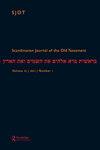The Presence and Absence of Marduk and YHWH
IF 0.1
3区 哲学
0 RELIGION
引用次数: 0
Abstract
ABSTRACT In the inscription of the Assyrian King Esarhaddon (680-669 BCE), the Babylonian god Marduk voluntarily left his city Babylon because of his fury at the iniquities of his people. It is Marduk’s fury that caused the devastation of Babylon. In fact, Esarhaddon’s father, Sennacherib destroyed Babylon and usurped the statue of Marduk to his capital Assur in 689 BCE. After the death of Sennacherib, his youngest son Esarhaddon not only planned to rebuild the temple of Babylon, Esagila, but also to return Marduk to Babylon. His rebuilding project suggests that Marduk changed his mind and decided to return Babylon. This sequence resembles Ezekiel’s theological structure of the divine presence and absence. Although previous studies of the Esarhaddon inscription shed light on the understanding of the theological background of Ezekiel’s literary structure, they overlooked the fact that Ezekiel uses hidden transcripts, the concept which James C. Scott introduced, to resist the Babylonian Empire.马尔杜克与YHWH的存在与缺失
摘要在亚述国王埃萨哈登(公元前680年至公元前669年)的铭文中,巴比伦神马尔杜克因对人民的罪孽感到愤怒而自愿离开了他的城市巴比伦。正是马尔杜克的愤怒造成了巴比伦的毁灭。事实上,Esarhaddon的父亲Sennacherib在公元前689年摧毁了巴比伦,并篡夺了马尔杜克的雕像。Sennacherib死后,他的小儿子Esarhaddon不仅计划重建巴比伦神庙Esagila,还计划将Marduk归还巴比伦。他的重建计划表明马尔杜克改变了主意,决定归还巴比伦。这个序列类似于以西结关于神的存在和不存在的神学结构。尽管先前对埃萨哈登铭文的研究揭示了对以西结文学结构的神学背景的理解,但他们忽略了这样一个事实,即以西结使用隐藏的抄本,即詹姆斯·C·斯科特引入的概念,来抵抗巴比伦帝国。
本文章由计算机程序翻译,如有差异,请以英文原文为准。
求助全文
约1分钟内获得全文
求助全文

 求助内容:
求助内容: 应助结果提醒方式:
应助结果提醒方式:


